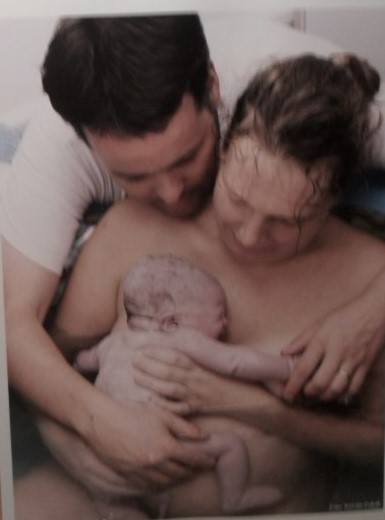Cord clamping and bonding
It often happens that the baby is being removed from the mother for measuring, weighing, etc.
A baby develops in a water world. For nine months, it is surrounded by amniotic fluid. When it is mature, it triggers (hormonally) the beginning of its birth. It must now leave its first home.
 Foto: Kerstin Pukall
Foto: Kerstin Pukall
The transition requires extensive physiological adaptations from the baby: with its blood circulation, oxygen supply, food intake, digestion, to light, air, sounds, touch, temperature and gravity. Since the oxygen supply to the brain must be continuous, the development of the lungs for breathing is a priority. This happens without active intervention and is well managed by the baby if it can take in its oxygen-rich blood from the placenta and umbilical cord, as it has done in the past. It gives the baby security if it is held in the arms of the mother/father after birth.
Being cut off from the oxygen supply too soon can lead to short-term oxygen deficiency and stress reactions. In addition: at least one-third of its possible total volume of blood is lost to the baby if parents have not been adequately informed. We advise you, to get correct information resp. question the offer, the blood of your newborn baby to freeze or to donate.
When the cord is clamped prematurely it often happens that the baby is being removed from the mother for measuring, weighing, etc. This procedure inevitably creates stress in the baby, which overrides the bonding process between parent and child. Never again is the concentration of bonding hormones in the blood of mother and child as high as in the first half hour after birth.
For these existential changes to adapt to the new existence, the baby needs individual time under the care of mother/father.
